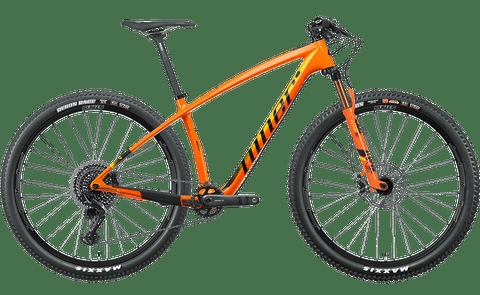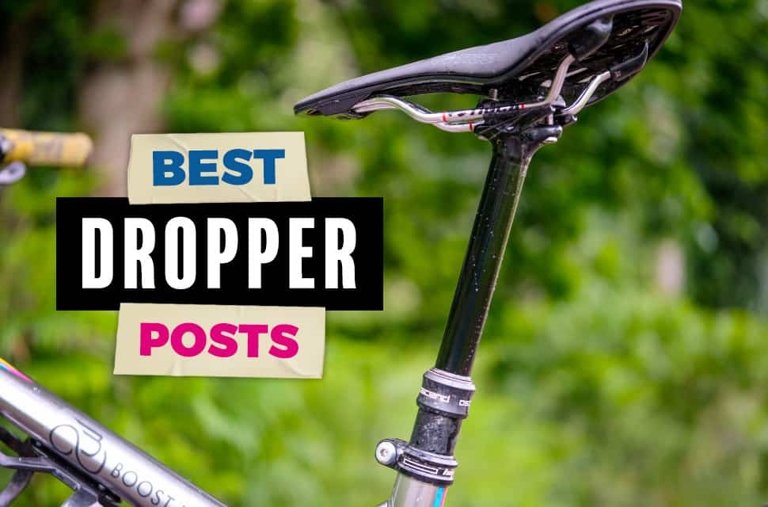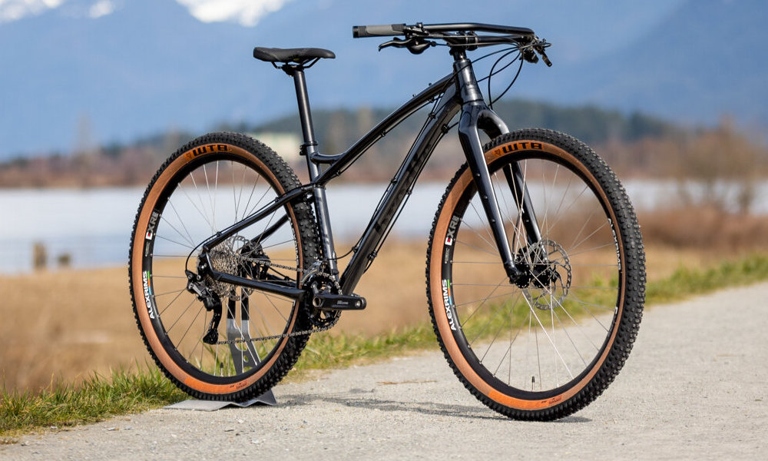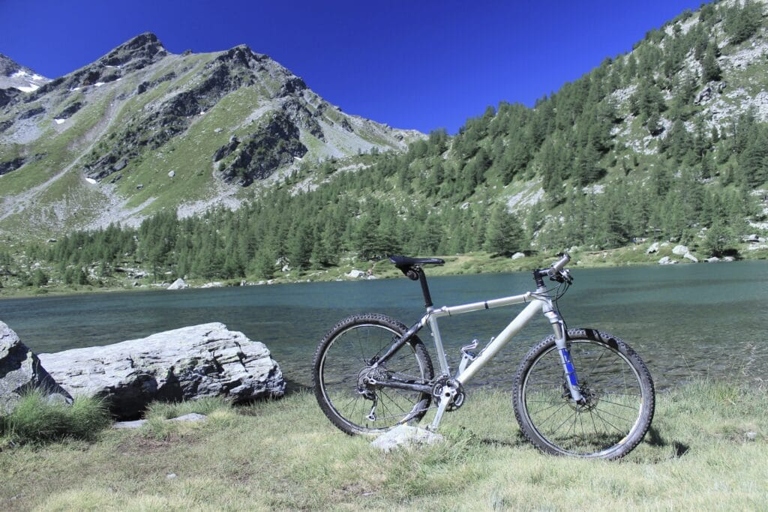When it comes to bikes, there are two main types that people tend to choose from: touring bikes and mountain bikes. While both types of bikes have their own unique benefits, there are also some key differences between them that you should be aware of before making a purchase. Here are 13 of the most notable differences between touring bikes and mountain bikes.
What is a Mountain Bike
Mountain biking can generally be broken down into multiple categories: cross-country riding, trail riding, all-mountain riding, downhill riding, freeride riding, and dirt jumping. Mountain biking is a sport of riding bicycles off-road, often over rough terrain, using specially designed mountain bikes. Mountain bikes share similarities with other bikes, but incorporate features designed to enhance durability and performance in rough terrain.
What Is a Touring Bike
Touring bikes are built to be comfortable for long days in the saddle, and they have a number of features that distinguish them from other types of bicycles. They also have more space for carrying luggage, and their frame geometry is designed to provide a more stable ride. A touring bike is a bicycle designed for long-distance travel on paved roads. For example, touring bikes typically have more gear options than mountain bikes, making them better suited for climbing hills.
What Makes a Mountain Bike Different from a Touring Bike?
Mountain bikes and touring bikes are designed for different purposes, which results in a number of key differences between the two types of bikes. Mountain bikes are designed for off-road riding, and they typically have wider tires, suspension, and lower gears than touring bikes. Touring bikes are designed for on-road riding, and they typically have narrower tires, lighter frames, and higher gears than mountain bikes.
1. Purpose
Mountain bikes have wider, knobbier tires for traction on loose or uneven surfaces, while touring bikes have thinner, smoother tires for speed and efficiency on paved roads. A mountain bike is designed for off-road riding, whereas a touring bike is designed for on-road riding. The main difference between the two is the tires.

Mountain bikes also have suspension to absorb bumps and shocks from riding over rough terrain, while touring bikes generally don’t have suspension. This makes mountain bikes heavier and slower than touring bikes, but also more comfortable to ride on rough roads.
Another difference between mountain bikes and touring bikes is the gear ratios. Mountain bikes have lower gear ratios for climbing steep hills, while touring bikes have higher gear ratios for pedaling on flat or rolling terrain.
Touring bikes usually have weaker brakes that are less likely to overheat from extended use. Finally, mountain bikes typically have more powerful brakes than touring bikes, since they need to be able to stop quickly on descents.
2. Mileage
Firstly, mountain bikes have wider tires with more tread, which gives them better grip and traction on rough and uneven terrain. Mountain bikes are designed for off-road riding, and as such, they have a few key features that set them apart from touring bikes. Secondly, mountain bikes have suspension systems to absorb shocks from bumps and roots, making for a smoother and more comfortable ride. Finally, mountain bikes typically have lower gear ratios, which makes pedaling up steep hills and mountains easier.

Touring bikes have narrower tires with less tread, which can make them slip and slide on loose dirt and gravel. They also lack suspension systems, so they can be jarring and uncomfortable to ride on rough roads. And, while touring bikes typically have higher gear ratios, making them better for pedaling on flat terrain, they can be difficult to pedal on steep hills and mountains. While touring bikes can be used for off-road riding, they are not as well equipped as mountain bikes for this type of terrain.
3. Handlebars
Mountain bikes are designed for off-road riding, and typically feature wider tires and suspension than touring bikes. Mountain bikes are also generally heavier and have more gears than touring bikes, making them better suited for climbing hills and rough terrain.
4. Gears
One of the most obvious differences between mountain bikes and touring bikes is the tires. Mountain bike tires are designed to grip the ground and provide traction in all kinds of terrain, while touring bike tires are designed for speed and efficiency on paved roads.
This makes mountain bikes heavier and slower on paved roads, but much more comfortable and stable on rough terrain. Mountain bikes have suspension to absorb the shock of riding over rough terrain, while touring bikes have much less or no suspension at all. Another difference is the suspension.
Mountain bikes also have lower gears than touring bikes, which makes them better suited for climbing hills and riding on rough terrain. Touring bikes, on the other hand, have higher gears which make them faster on flat surfaces.

Finally, mountain bikes typically have more powerful brakes than touring bikes, which is necessary for safely stopping on rough, slippery, or steep terrain.
5. Geometry
Mountain bikes and touring bikes are designed for different purposes, which results in a number of key differences between the two types of bikes.
Mountain bikes are designed for off-road riding, and as such, they have features that make them better suited for this type of riding than touring bikes. They also have suspension systems that help absorb shocks from bumpy terrain. Mountain bikes have wider tires with more tread, which gives them better traction and stability on rough and uneven surfaces.
They also generally have lighter frames and components, which makes them easier to pedal over long distances. Touring bikes, on the other hand, are designed for on-road riding, and as such, they have features that make them better suited for this type of riding than mountain bikes. Touring bikes have narrower tires that are smoother, which makes them faster on paved surfaces.

If you’re planning on doing mostly on-road riding, a touring bike is the better choice. So, if you’re planning on doing mostly off-road riding, a mountain bike is the better choice.
6. Suspension
One of the most important differences is suspension. This makes them lighter and easier to pedal, but it also means that they will be less comfortable on rough roads. Mountain bikes have suspension forks and rear shocks that help to absorb the bumps and jolts of riding over rough terrain. Touring bikes, on the other hand, have much less suspension, or none at all. Mountain bikes are designed for off-road riding, and as such, they have certain features that make them different from touring bikes. This makes for a more comfortable ride, but it also makes the bike heavier and more difficult to pedal over long distances.
7. Dropper Post
A dropper post is a seatpost that can be lowered and raised on a mountain bike, making it easier to switch between climbing and descending. Most dropper posts are operated by a lever at the handlebar, although some have a remote control.

They can be a bit pricey, but they’re worth it if you do a lot of mountain biking. A dropper post is a great addition to a mountain bike, particularly if you ride in terrain that requires a lot of switching between climbing and descending.
8. Frame Material
Mountain bikes are designed to be ridden over rough terrain, and so they have sturdier frames than touring bikes. Touring bikes are designed for long-distance riding on paved roads, and so they have lighter frames. The frame material of a mountain bike is usually steel or aluminum, while the frame material of a touring bike is usually carbon fiber.
9. Wheels
They often have features like drop-down handlebars and multiple gears for climbing hills. Mountain bikes have wider tires with more tread for better grip on loose or uneven surfaces. They also have suspension systems to absorb shocks from bumps and roots. Touring bikes have narrower tires and are built for stability and speed on smooth pavement. A mountain bike is designed for riding on rough, off-road terrain, while a touring bike is meant for paved roads and highways.
10. Cargo
Touring bikes typically have lighter frames and components than mountain bikes, and they’re often equipped with features that make them more suitable for long-distance riding, such as fenders and racks for carrying luggage. Mountain bikes typically have heavier frames and components than touring bikes, and they’re often equipped with features that make them more suitable for off-road riding, such as suspension forks and wider tires. A touring bike is designed for long-distance riding on paved surfaces, while a mountain bike is designed for off-road riding on unpaved surfaces.
11. Fenders
Mountain bikes and touring bikes differ in a few key ways. Most notably, mountain bikes have suspension systems to absorb impact from rough terrain, while touring bikes do not. Mountain bikes also have wider tires and lower gears than touring bikes, making them better suited for riding on uneven or hilly terrain. Finally, mountain bikes typically have stronger frame construction than touring bikes, to better withstand the rigors of off-road riding.
12. Shifters
Mountain bikes and touring bikes are designed for different purposes, which is reflected in their different features. Mountain bikes are designed for off-road riding, with features that include:
-Larger, knobbier tires for traction on loose or uneven surfaces

-A suspension system to absorb shocks from bumpy terrain
-A frame that is designed to be durable and lightweight
-Mountain bikes also typically have lower gears than touring bikes, which makes them better suited for climbing hills.
They have features that include: Touring bikes, on the other hand, are designed for long-distance riding on paved surfaces.
-Smoother, thinner tires for speed and efficiency on pavement
-A frame that is designed to be comfortable for long hours in the saddle
-Touring bikes also typically have higher gears than mountain bikes, which makes them better suited for flat or rolling terrain.
If you’re planning on doing mostly on-road riding, a touring bike is the better choice. So, if you’re planning on doing mostly off-road riding, a mountain bike is the better choice.
13. Lights
Finally, mountain bikes usually have stronger brakes to handle the increased speed and descent that comes with off-road riding. For one, mountain bikes have wider tires with more tread, which helps them grip the ground better and navigate rough terrain. They also have suspension systems to absorb shocks from bumpy trails. Additionally, mountain bikes typically have lower gear ratios, which makes pedaling up hills easier. Mountain bikes are designed for off-road riding, and as such, they have certain features that make them different from touring bikes.
What Makes Mountain Bikes and Touring Bikes Similar?
They share many similarities, such as their wide tires and durable frames. Mountain bikes and touring bikes are both designed for off-road riding. Touring bikes, on the other hand, are built for comfort and long-distance riding, with features like comfortable seats and more gears for easy pedaling. However, there are some key differences between these two types of bikes. Mountain bikes are designed for more aggressive riding, with features such as suspension and disc brakes that give them an edge on rougher terrain.
Weight
However, there are some key differences between these two types of bikes. Both mountain bikes and touring bikes are designed to be ridden over rough terrain. They share many common features, such as wide tires and strong frames.
They also have lower gear ratios, which makes pedaling uphill easier. Mountain bikes are designed for off-road riding, and they typically have suspension systems to absorb shocks from riding over rough terrain.

Touring bikes are designed for long-distance riding on paved roads. They often have features that make them more comfortable to ride, such as wider seats and handlebars. They also typically have higher gear ratios, which makes pedaling faster on flat terrain.
Wider, Cushier Tires
Mountain bikes and touring bikes share some similarities, most notably in the wider, cushier tires they use. Both types of bikes are designed for off-road riding, and the wider tires provide more stability and comfort on rough terrain. The tires on mountain bikes are usually wider than those on touring bikes, but both types of bikes typically have tires that are at least 2 inches wide.
Mountain bikes and touring bikes also tend to have similar frame geometry, with a longer wheelbase and a higher bottom bracket. This makes them both more stable and comfortable to ride, especially when carrying a load.

Mountain bikes typically have more gears than touring bikes, but both types of bikes will typically have at least 21 gears. Another similarity between mountain bikes and touring bikes is that they both typically come equipped with a wide range of gears, making them ideal for riding in a variety of terrain.
However, in general, mountain bikes and touring bikes tend to cost about the same. Finally, mountain bikes and touring bikes tend to be similar in price. Both types of bikes can be found in a wide range of prices, depending on the quality of the components and the features included.
Frequently Asked Questions
1. What is the difference between touring bikes and mountain bikes?
Touring bikes are designed for long-distance riding on paved surfaces, while mountain bikes are designed for off-road riding on unpaved surfaces.
2. What are the key differences in the frame design of touring bikes and mountain bikes?
Touring bikes have a longer wheelbase and a more relaxed head tube angle, which makes them more stable at high speeds. Mountain bikes have a shorter wheelbase and a steeper head tube angle, which makes them more maneuverable.
3. What are the key differences in the suspension of touring bikes and mountain bikes?
Touring bikes have a suspension fork that absorbs shock from the road, while mountain bikes have a suspension fork and rear shock that absorb shock from the trail.
4. What are the key differences in the tires of touring bikes and mountain bikes?
Touring bikes have smooth, narrow tires that are designed for paved surfaces, while mountain bikes have knobby, wide tires that are designed for off-road traction.
5. What are the key differences in the gearing of touring bikes and mountain bikes?
Touring bikes have higher gears for pedaling on flat surfaces, while mountain bikes have lower gears for pedaling on steep surfaces.
6. What are the key differences in the brakes of touring bikes and mountain bikes?
Touring bikes have linear-pull brakes or disc brakes for stopping power on long descents, while mountain bikes have disc brakes for stopping power on steep descents.
7. What are the key differences in the handlebars of touring bikes and mountain bikes?
Touring bikes have drop handlebars that allow for multiple hand positions, while mountain bikes have flat handlebars that provide better control on technical terrain.
8. What are the key differences in the seat of touring bikes and mountain bikes?
Touring bikes have a more comfortable seat for long hours in the saddle, while mountain bikes have a less comfortable seat that is designed for an upright riding position.
9. What are the key differences in the pedals of touring bikes and mountain bikes?
Touring bikes have platform pedals or clipless pedals for pedaling efficiency, while mountain bikes have platform pedals or clipless pedals for better control on technical terrain.
10. What are the key differences in the weight of touring bikes and mountain bikes?
Touring bikes are typically heavier than mountain bikes because they are designed for carrying more gear.
Final thoughts
Mountain bikes and touring bikes are both great for different reasons. It really depends on what you want to use the bike for as to which one is better for you. Mountain bikes are great for off-road riding, while touring bikes are better for long-distance riding on paved roads. Both bikes have their own unique features that make them better suited for their own specific purposes.
